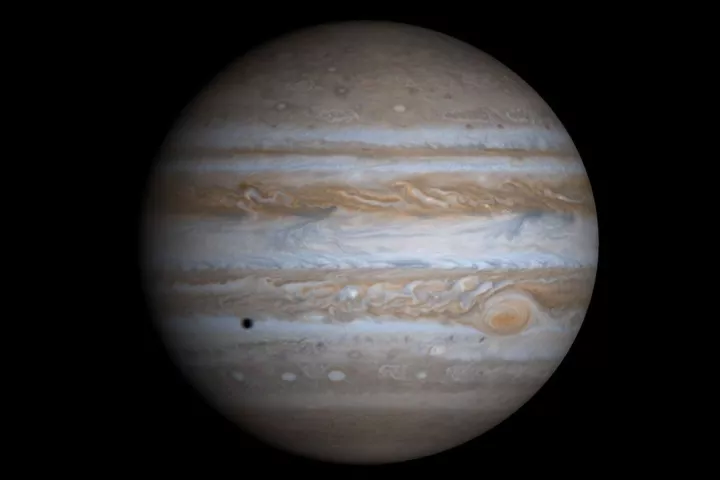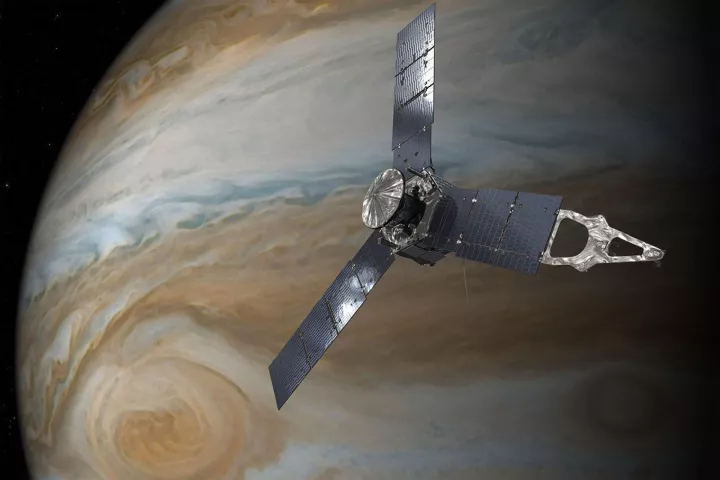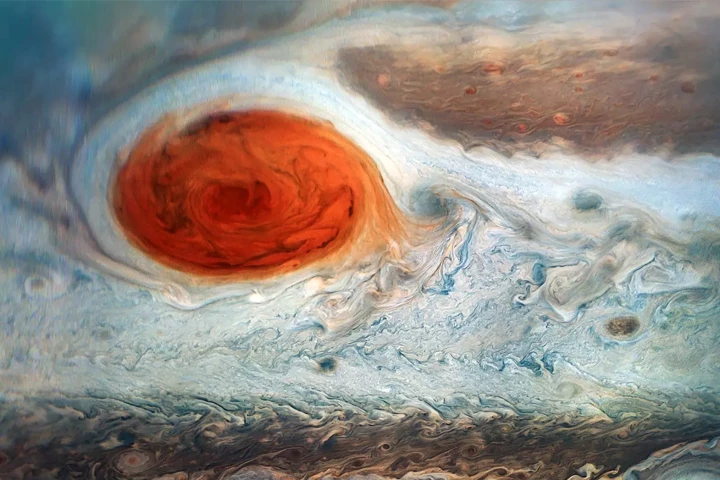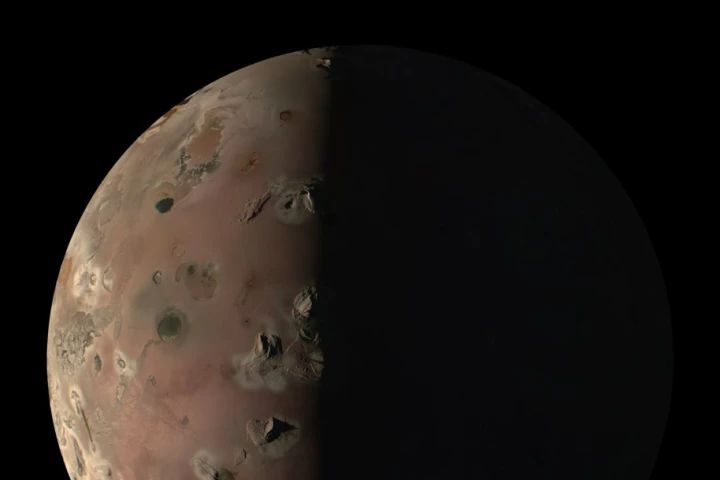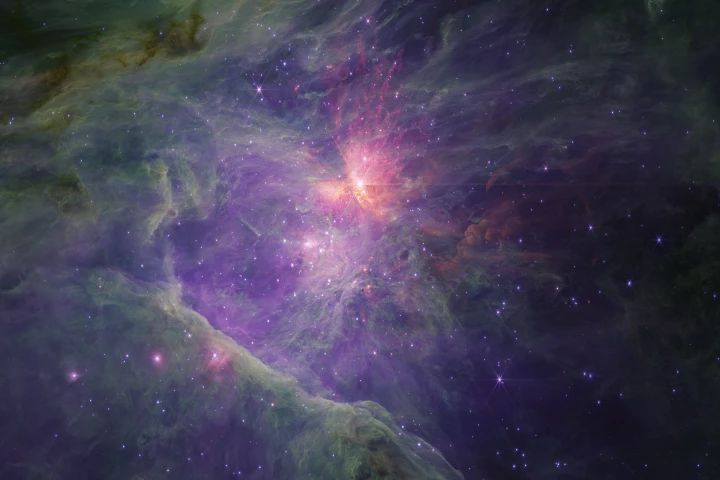Jupiter
-
If you've ever wondered why we are here, then you can thank Jupiter for part of the answer. A new study from Rice University suggests that if it weren't for the gas giant, the Earth would have spiraled into the Sun during its formation.
-
Using the thermal equivalent of giving it a sharp whack, NASA repaired the camera of its Jupiter-orbiting Juno probe from 370 million miles (590 million km) away after the instrument was put out of commission by the gas giant's radiation belts.
-
High-resolution images taken by the Hubble Space Telescope of Jupiter’s Great Red Spot have revealed that it’s not as stable as we thought. Instead, the Spot is squeezing in and out, with NASA describing it as “jiggling like a bowl of gelatin.”
-
The largest moon in our solar system may have been knocked off its axis and cracked like an egg four billion years ago by an asteroid bigger than the one that wiped out the dinosaurs on Earth at the end of the Cretaceous age.
-
Data from NASA's Juno Jupiter orbiter suggests that the Jovian moon Europa produces about 26 lb/s (12 kg/s) of oxygen or almost 100 times less than previously estimated. This changes the probability of life being found in the moon's subterranean ocean.
-
NASA has released a high-resolution image taken by the Juno deep space probe during its close encounter with Jupiter's moon Io on December 30, 2023. The image of the volcanic satellite not only shows remarkable details, but an unusual kind of lighting.
-
On December 30, 2023, NASA's Juno deep space probe made the closest flyby of Jupiter's moon Io in over two decades. The robotic spacecraft passed within 930 miles (1,500 km) of the volcanic satellite, returning closeup images of the south pole.
-
Hiding within new images of a nebula captured by the James Webb Space Telescope, astronomers have made a puzzling discovery – dozens of Jupiter-sized objects that defy explanation.
-
Although Saturn's moon Enceladus and Jupiter's moon Europa both have ice-covered surfaces, oceans may exist beneath that ice. The TRIPLE-nanoAUV 2 project is aimed at getting an uncrewed submersible into those oceans, to search for life.
-
NASA's Juno deep space probe has made its closest flyby yet of Jupiter's volatile moon Io. During its 51st orbit of the giant planet, the solar-powered robotic spacecraft came within 22,600 miles (35,500 km) of Io's volcanic surface.
-
Saturn has overtaken Jupiter as the planet with the most known moons in the solar system. Astronomers have announced a bumper crop of 62 new moons orbiting the ringed planet, pushing its total to well over 100.
-
ESA's Juice Jupiter mission is back on track after Mission Control in Darmstadt, Germany managed to shake loose and deploy the stuck ice-penetrating Radar for Icy Moons Exploration (RIME) antenna that was stuck due to a tiny pin.
Load More
